Catching walleyes easier than you think on Stockton Lake and more
Ask anyone in Missouri about how to catch walleye around the state, and many might tell you it is the “unicorn” of fish. You may have heard the joke that if you want to catch a walleye around here, start by fishing for something else. Sadly, that’s one of those “funny because it’s true” jokes.
But what if I said you don’t have to rely on accidents to catch a walleye, and that it’s easier than you think? So easy in fact, you can use arguably the most fundamental fishing technique that exists: a jighead and a nightcrawler.

No matter your skill level, you can use the jig and crawler technique to put walleye in the boat consistently, especially early in the summer months.
I learned more about this method recently from a good friend of mine, Kris Nelson, who is the owner and guide at Tandem Fly Outfitters on Stockton Lake. Stockton is considered the top walleye fishery in Missouri, yet somehow it still remains somewhat of a secret less than 2.5 hours from Kansas City.
I knew Nelson could help solve my frustration and show me the ways of the summer walleye, so I headed down the second week of June for some education.
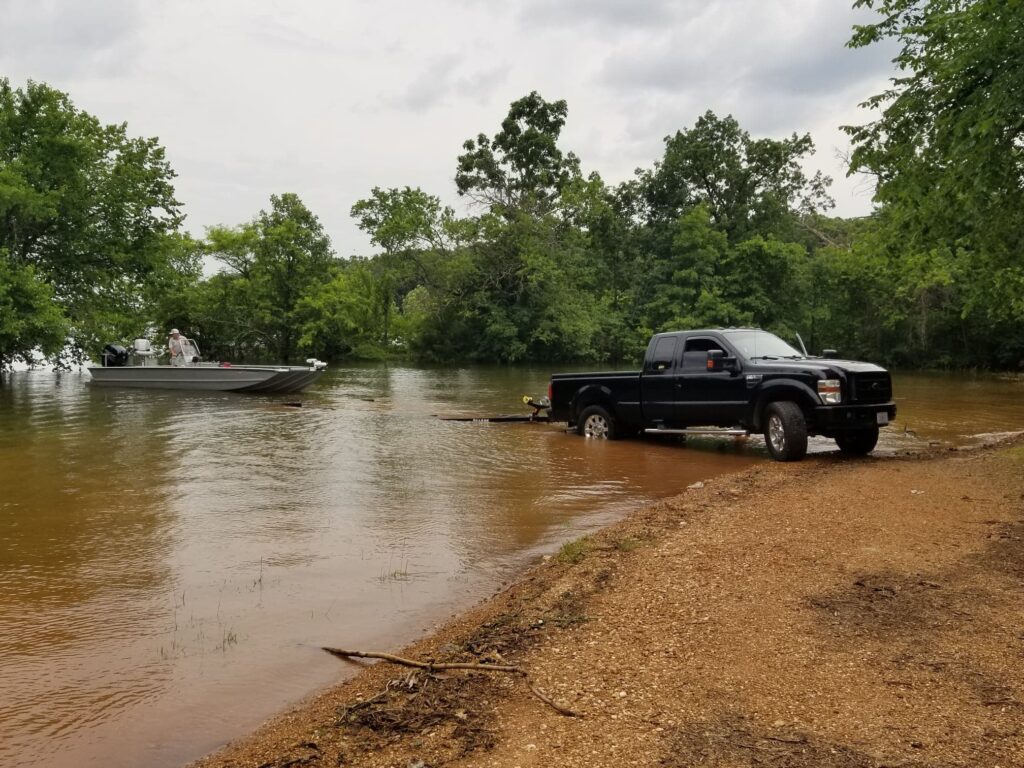
The early summer bite picks up primarily based on one condition, he informed me.
“It’s all relevant to water temperature,” Nelson said. “You’ll start fishing for them with a jig and crawler on main lake and secondary points near deep water when it hits 65 degrees.”
Essentially, in the early summer months from late May through June, the walleye move off their spawning grounds onto points of various depths.
You don’t need fancy gear for this, either. A light action spinning rod and reel is more than adequate. On my recent trip with Tandem Fly Outfitters, we used primarily Lew’s equipment paired with 6-pound Mr. Crappie Hi-vis monofilament line.
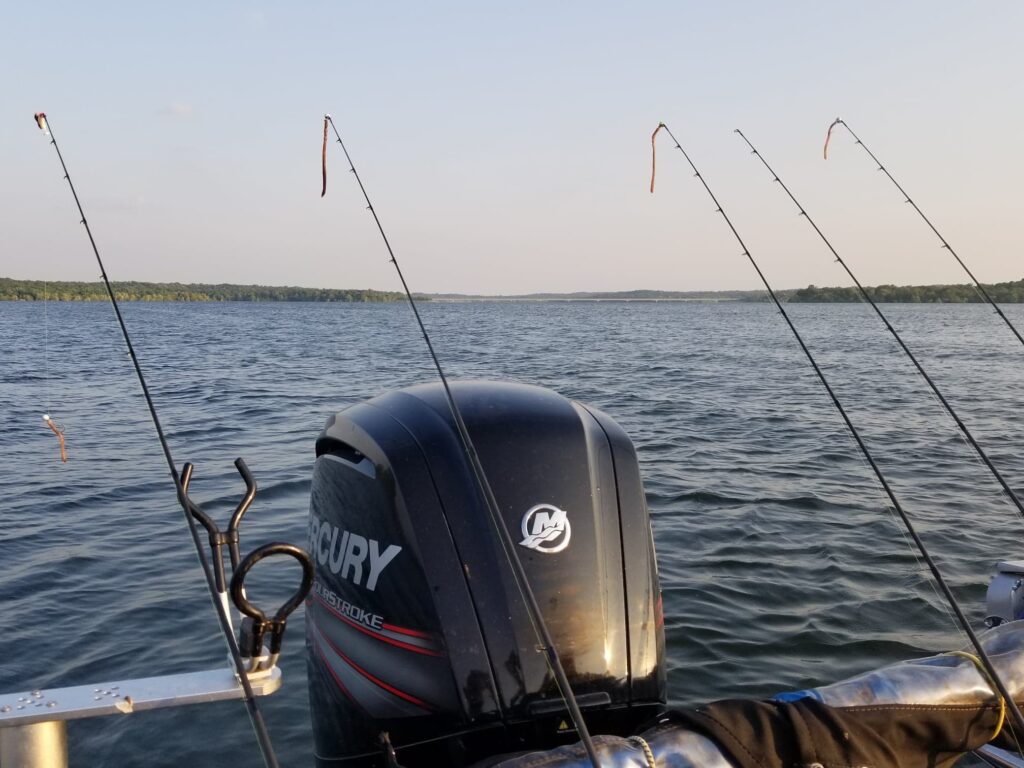
When you begin, start by searching for them in shallow water. It’s not surprising to find them in 12 feet or less on a cloudy day at normal lake elevation.
“If you do find them shallow, be sure to stay back from them,” Nelson explained. “Simply cast and retrieve slowly back to the boat while maintaining bottom contact.”
When bites are minimal, just move out a little deeper until you find them. On my trip, we found a productive point at our second spot and stayed there for a while focusing on 24-26 feet of water. If you have spot lock on your trolling motor, that will definitely come in handy.
Our fishing rods were simply resting along the edge of the boat with lines straight down. That always makes me a little nervous thinking one might go in the water. However, the rod tip just bounced when a fish was biting and one of us would jump up and set the hook.
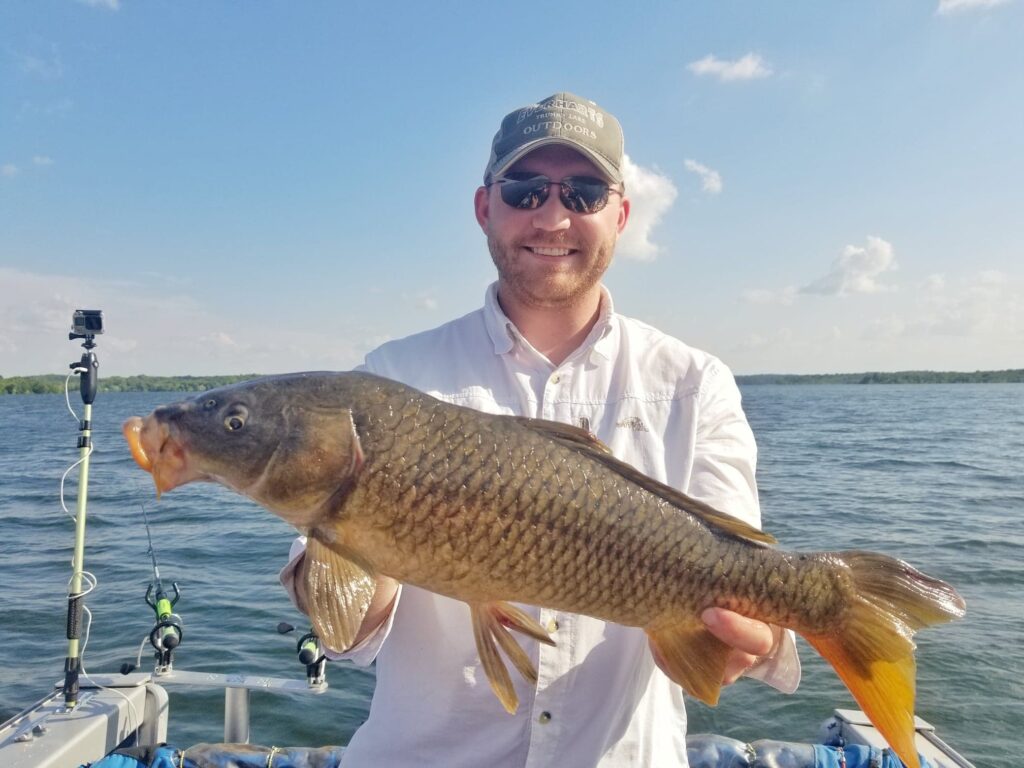
If you missed one, you’d almost always know if it was a walleye because you could see the bite marks in the nightcrawler. When walleye were intermittent, nonstop action from drum, bass, catfish, and carp kept things exciting.
When you feel a good bite but miss it, I learned that you should immediately drop the line back down. The fish will often strike again, even if the worm is mostly gone.
While jighead color can be a factor in the bite, size matters more.
“An 1/8th oz jig head is ideal as it gets to the bottom better, and bottom contact is key,” Nelson emphasized. “But if they’re really finicky or if it’s slick calm on the water, you’ll want to go to 1/16th.”
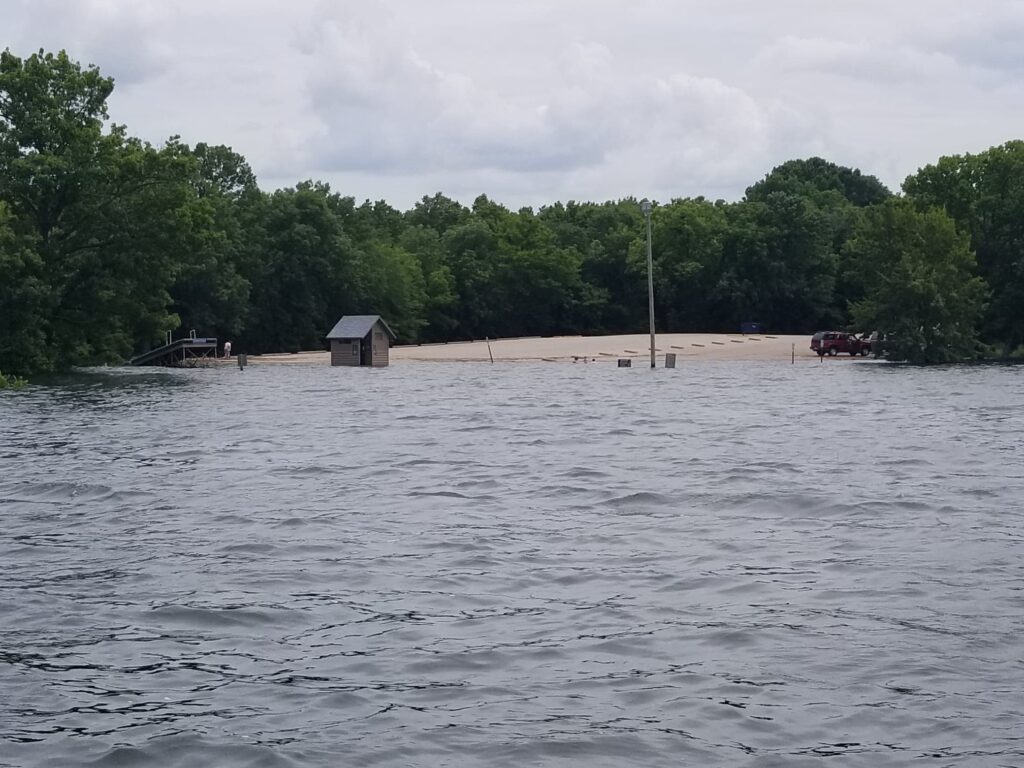
As far as colors, it’s best just to have a variety tied on to see what’s working, starting with white.
More importantly, the type of jighead we used impacted our experience tremendously. We were using the Blankenship Shooter Crappie Head made by JaKKed Baits. This jighead has a twist lock spring bait keeper that holds your crawler on for multiple fish. There were several times we caught 3-4 fish on one nightcrawler. I tried duplicating that with other jigheads on later trips and the performance wasn’t even close to matching the JaKKed jigheads.
As we headed to the truck with multiple keepers on our stringer, Nelson reminded me of a famous quote we’ve all heard many times before in fishing: “Patience is a virtue.”
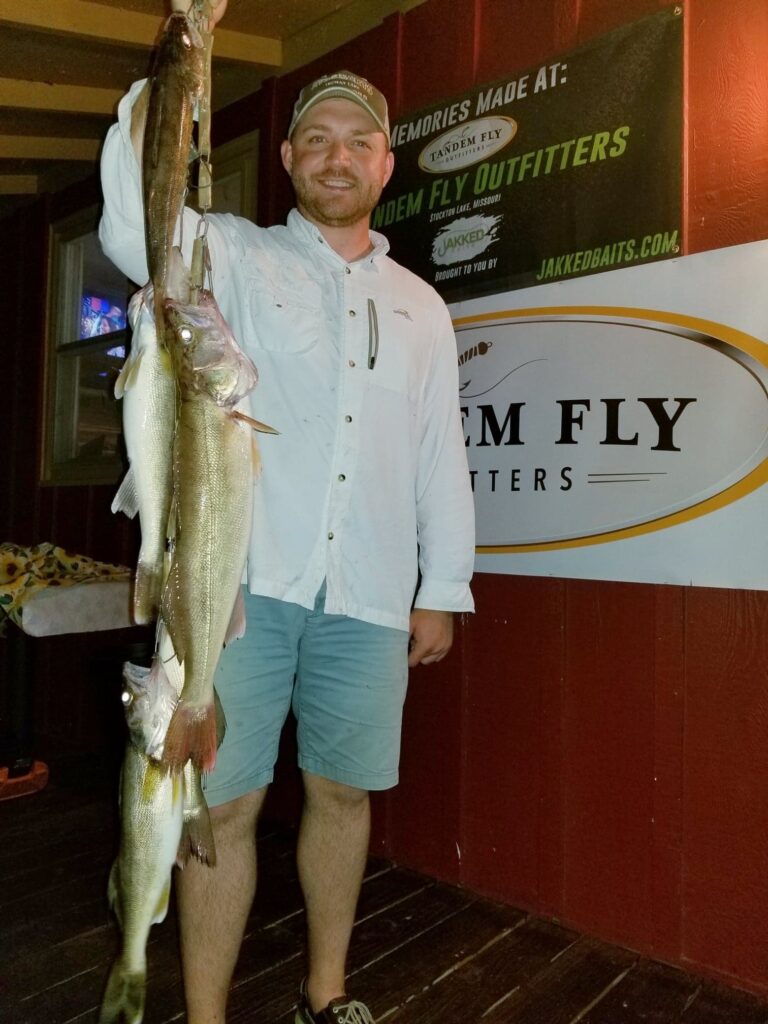
That’s especially true for walleyes.
“It’s easy to get frustrated if you don’t find them your first couple of times out,” Nelson said. “Some days they feed better than others and it’s easy to want to target something different, but the most important thing is to just keep after them.”
Get a hold of Kris Nelson by visiting his website: https://tandemflyoutfitters.com/
Quick Summary:
- Best time on Stockton: May 15-June 15
- Best water temp for jig and crawler method: 65-80 degrees
- Best weather conditions: cloudy with a little bit of chop on the water
- Equipment needed: light to medium spinning rod with 6-8 pound monofilament line, jigheads with good bait keepers like JaKKed Blankenship Shooter heads
- Best lake structures to target: main lake and secondary points near deep water
- Best advice: be patient, don’t give up, and stick to targeting walleye until you find them
- Contact info for Tandem Fly Outfitters on Stockton Lake: https://tandemflyoutfitters.com/


